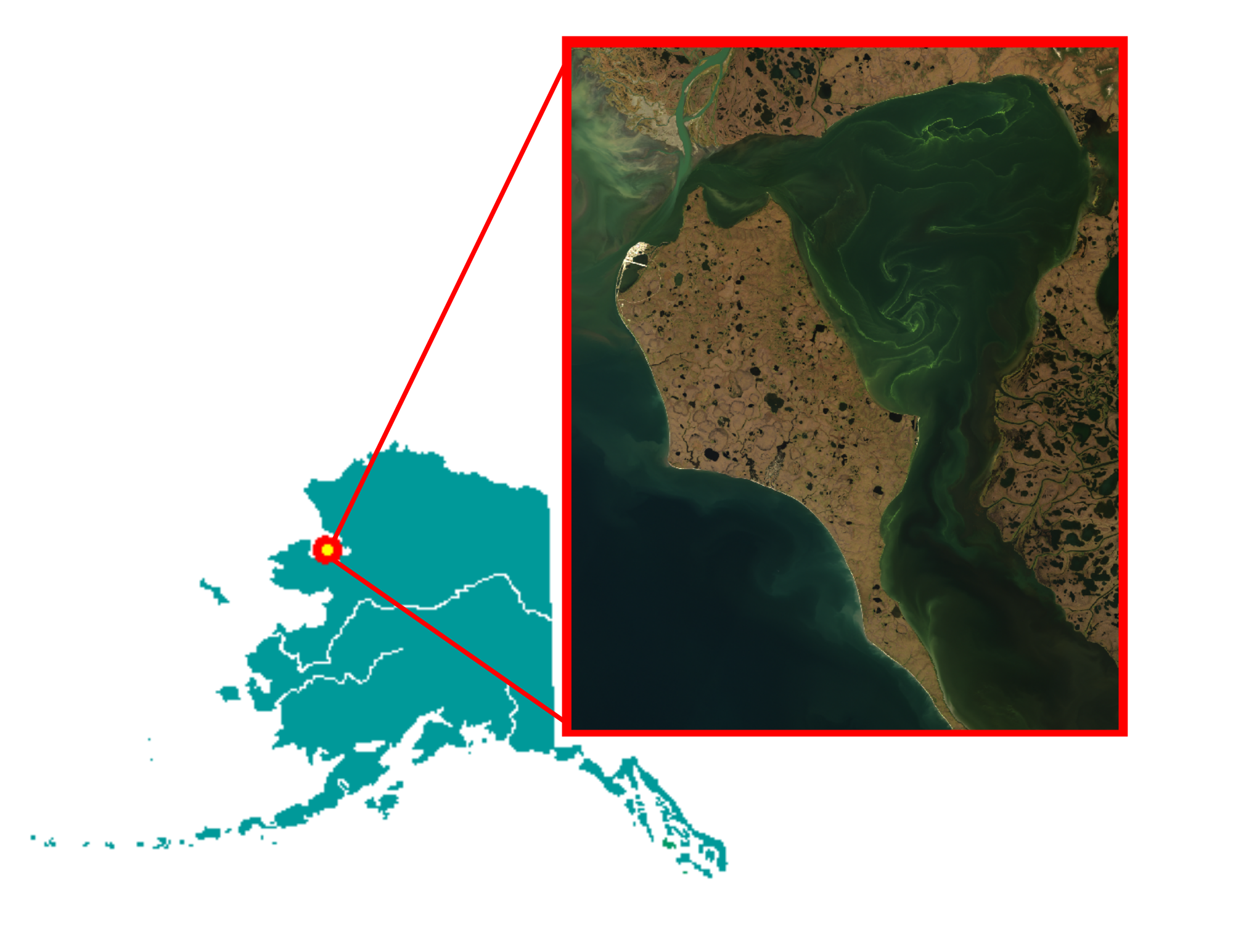Cyanobacterial harmful algal blooms (cHABs) in Arctic estuaries are an emerging threat causing concerns for communities that rely on subsistence resources. Yet, managers have little information about the causes or impacts of these blooms on which to base warnings or management actions. The project team will address key questions posed by communities in Kotzebue Sound and Hotham Inlet about possible cyanotoxins in subsistence foods, and investigate environmental drivers of these blooms, especially the potential importance of temperature and nutrients. The team will also test and validate a remote-sensing algorithm to assess its management utility in high-latitude coastal waters.
Why We Care
Cyanobacteria blooms can poison people, fish, and wildlife through the production of toxins and deplete oxygen resulting in large-scale fish kills. These blooms are an emerging and recurrent threat in Kotzebue, Alaska; local knowledge indicates that such events did not occur in the region before 2008.

What We Are Doing
This competitive financial assistance award will support the efforts of the Native Village of Kotzebue, Alaska, to evaluate and mitigate the impacts of emerging cyanobacterial blooms on subsistence livelihoods, fisheries, and public health. The project team will study cHABs and their toxins in Kotzebue Sound and Hotham Inlet through in situ sampling, remote sensing, and lab experiments.
The project aims to:
- Determine how environmental factors promote cHABs in Kotzebue Sound;
- Determine whether cyanotoxins are present in water, fish, and shellfish from Kotzebue Sound, and how toxin levels relate to cyanobacterial abundance and environmental variables;
- Assess the management utility of NOAA’s remote sensing HAB algorithms in the high-latitude coastal waters of Kotzebue Sound; and
- Foster local capacity for monitoring cHABs and cyanotoxins and disseminate project results to local communities and managers.
Benefits of Our Work
Project findings will inform subsistence food safety decisions in remote Kotzebue, Alaska. The overarching goal of this work is to ensure full and safe use of critical marine resources harvested for subsistence purposes throughout the remote Alaskan Arctic, supporting food security and tribal sovereignty.
Andrew Juhl and Ajit Subramaniam of Columbia University lead the project. Alex Whiting, of the Native Village of Kotzebue, is a co-investigator.
The project is funded through the NCCOS Ecology and Oceanography of Harmful Algal Blooms (ECOHAB) Program and authorized under the Harmful Algal Bloom and Hypoxia Research and Control Act (33 U.S.C. §§ 4001 et seq.), which authorizes NOAA to detect and monitor harmful algae.
